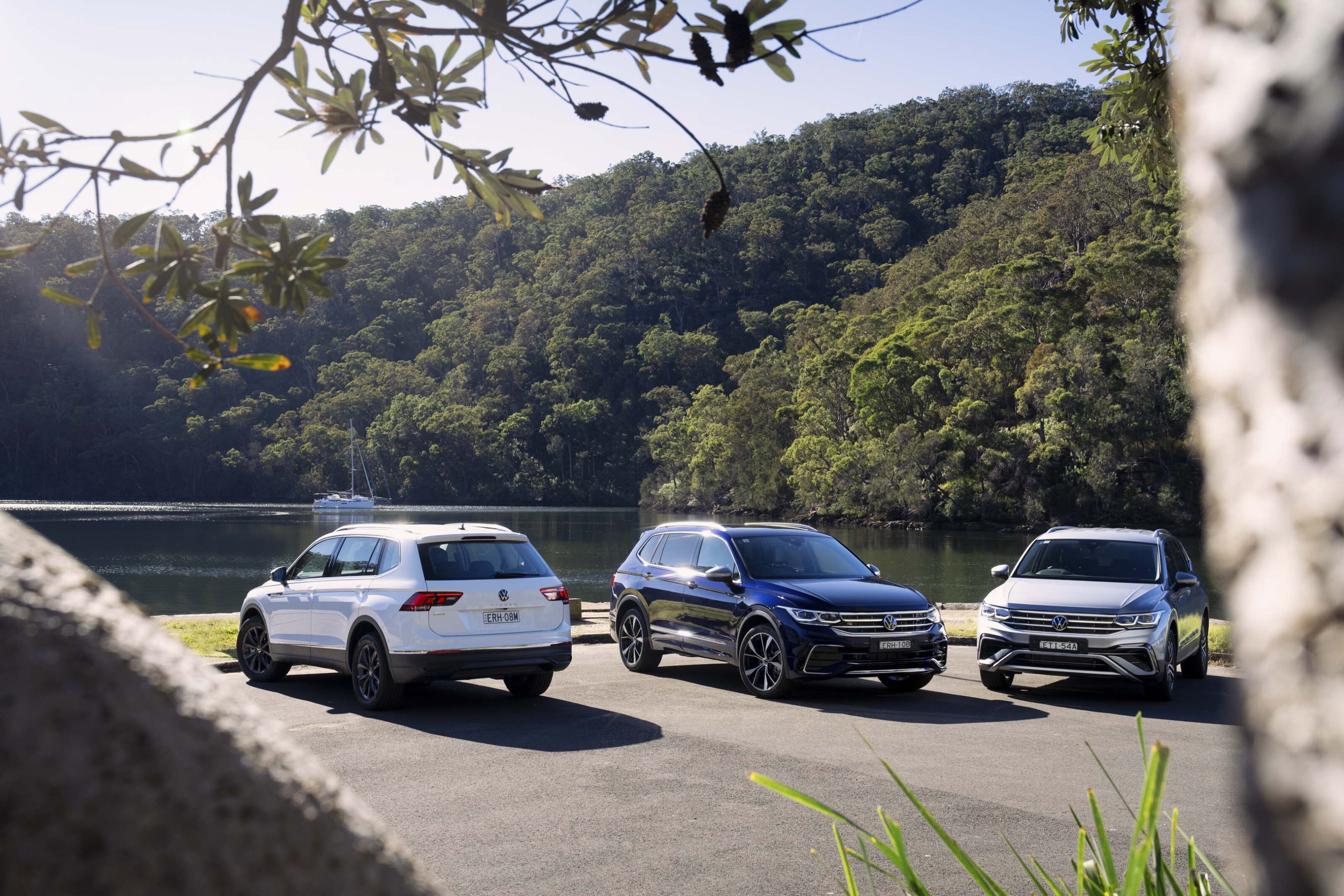Score breakdown
Things we like
- Great chassis
- Strong engines
- Well-equipped
Not so much
- Changeable 2022 spec inclusions
- Flaky CarPlay integration
- Hefty price increases
If you’re not a Volkswagen Tiguan owner or never shopped for one, you may not be aware that there are two distinct versions of VW’s impressive SUV. Not two model grades – that is patently untrue, as VW takes a Mazda-like commitment to filling niches – but two differently sized versions of the Tiguan.
There’s the regular, five-door/five-seater Tiguan SUV, which goes into battle with cars such as the Mazda CX-5, Toyota RAV4 and about a million others, and does so with a tech-heavy vibe, powerful petrol and diesel engines, and a thoughtful interior.
Then there’s the Tiguan Allspace. Confusingly, that’s called Tiguan in the Americas because it’s the only one they get over there. But the Allspace comes from the factory in Mexico with that tiny extra badge attached to it and a longer wheelbase – and therefore more room to pack in a pair of occasional rear seats.
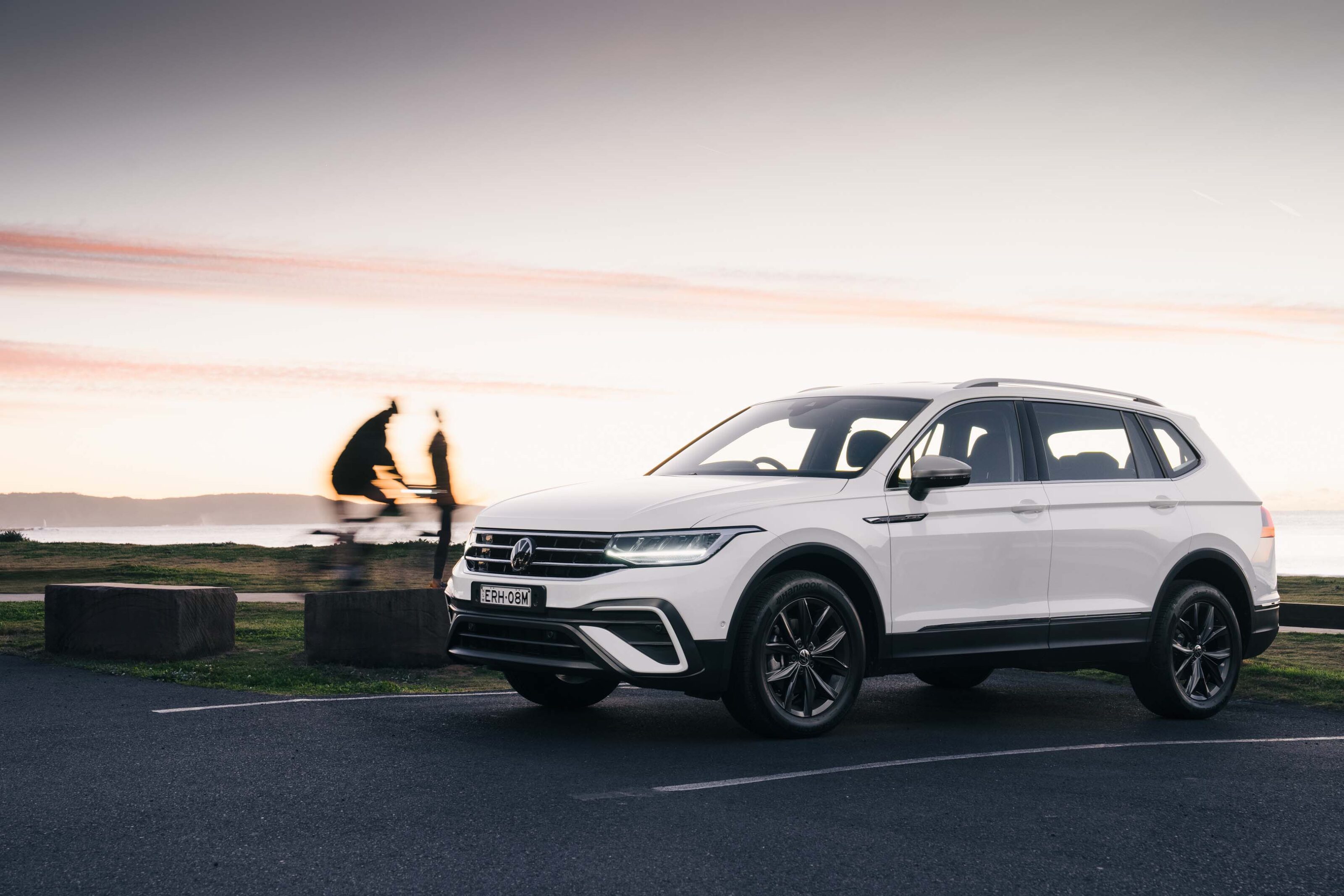
Suddenly, the Tiguan isn’t battling with mid-size SUVs but also firing pot-shots at bigger units like Hyundai’s Santa Fe, Kia’s Sorento and Toyota’s Kluger, among others.
But it’s not as big as those cars, which makes you wonder if the Allspace is a tiny niche. It isn’t. Turns out more than 40 per cent of Tiguans bought in Australia are the Allspace version.
That figure certainly bowled me over when I saw it. Further statistics bowled me over, some of which I will reveal as we progress through the huge model line-up on offer.
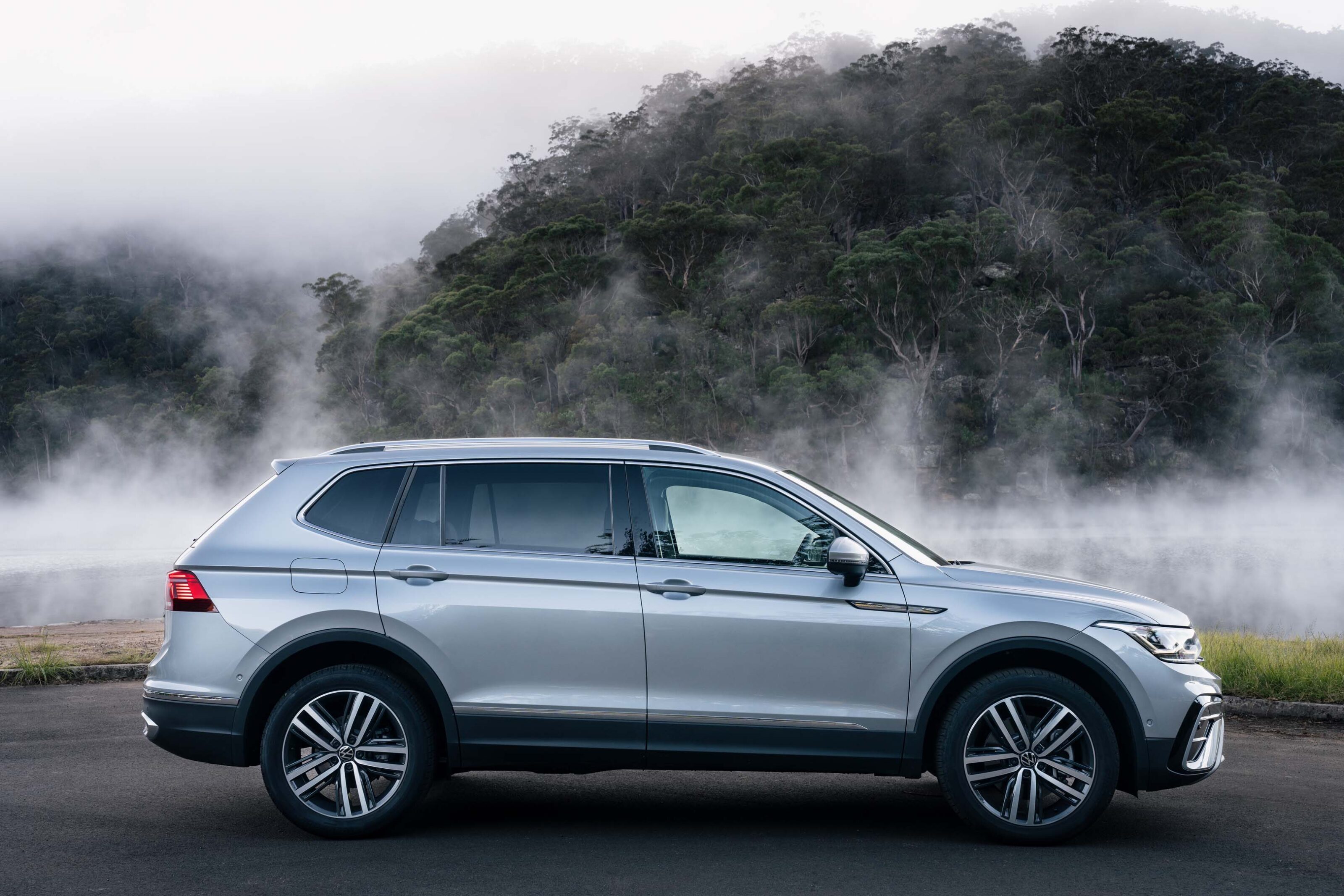
Pricing and features
As of June 2022, Volkswagen offers six distinct specification levels of the Allspace, with three petrol engines and a diesel along with three equipment levels. Unfortunately – and this is really the theme of 2022 – prices are up by around five per cent over the previous model year.
Pricing opens at $44,590 before on-road costs with the only front-wheel-drive Tiguan, the 110 TSI Life, which is also the only one with a 1.4-litre four-cylinder engine. For the money, you’ll get 18-inch wheels, a cloth interior, front and rear parking sensors, reversing camera, auto LED headlights (and taillights), 8.0-inch touchscreen, sat-nav, digital dashboard, auto wipers, adaptive cruise control, three-zone climate control, an electric tailgate and a space-saver spare.
If you want to pay $48,590 (plus on-road costs), you can step up to the 132 TSI Life with a 2.0-litre four-cylinder engine and all-wheel drive.
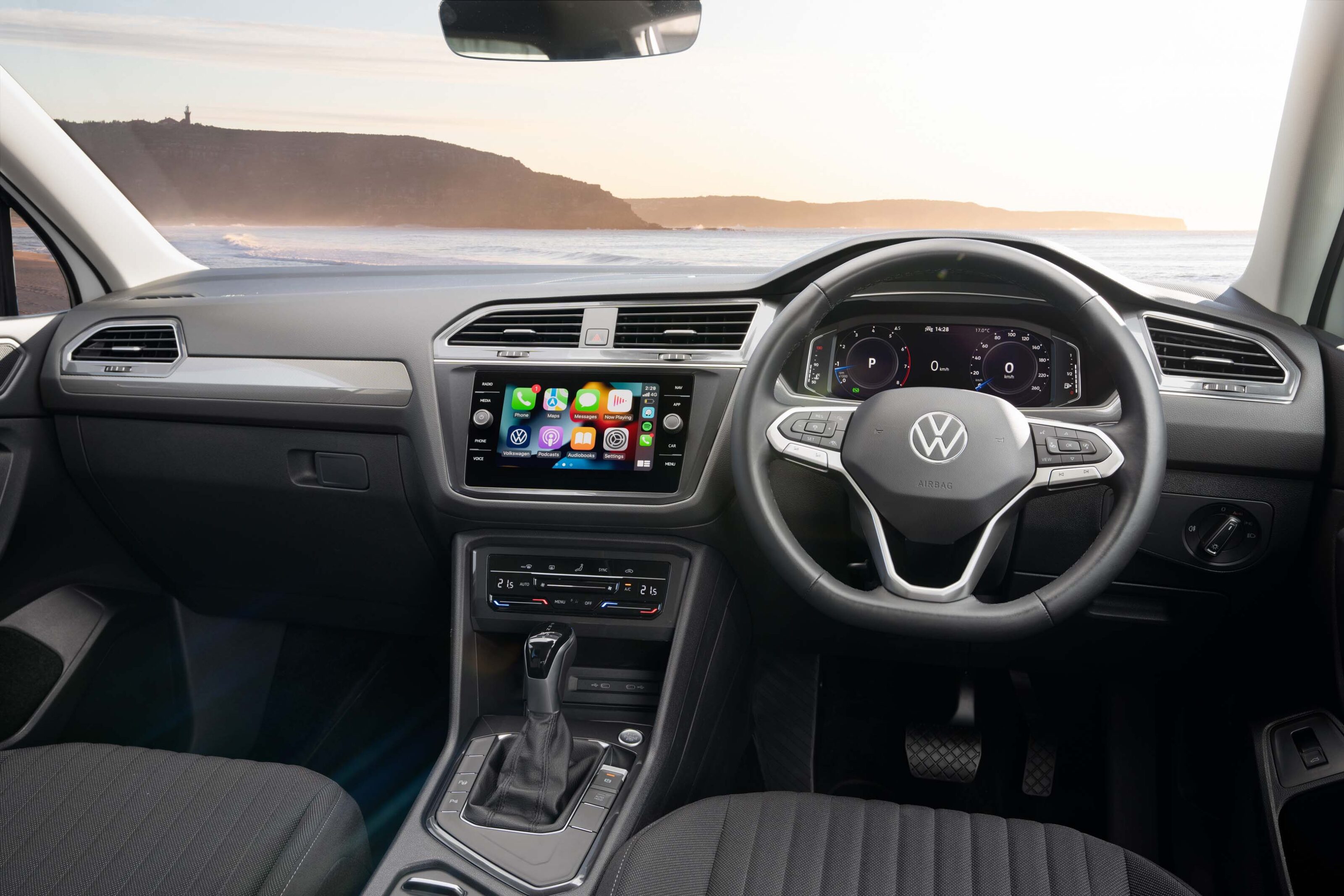
Very much standard across the entire range is a wireless charging pad, wired and wireless Apple CarPlay and Android Auto and digital radio. Both of the touchscreens, whether they’re the 8.0-inch Discover or 9.2-inch Discover Pro feature sat-nav.
Also standard across the range is IQ Drive, which is what VW calls its collection of safety assistance features. You get all the usual airbags (which reach to the third row), ABS and stability controls as well as adaptive lane guidance, forward collision warning, forward auto emergency braking, lane assist, side assist, rear cross-traffic alert and driver attention monitoring.
It’s worth pointing out that, at the time of writing, you are not guaranteed to get reverse cross-traffic alert, side assist, or the electric tailgate due to global supply chain chaos. There are 4000 Allspaces available with each of these fitted but the next batch will not feature the first two items (which is annoying) and the third will become an option.
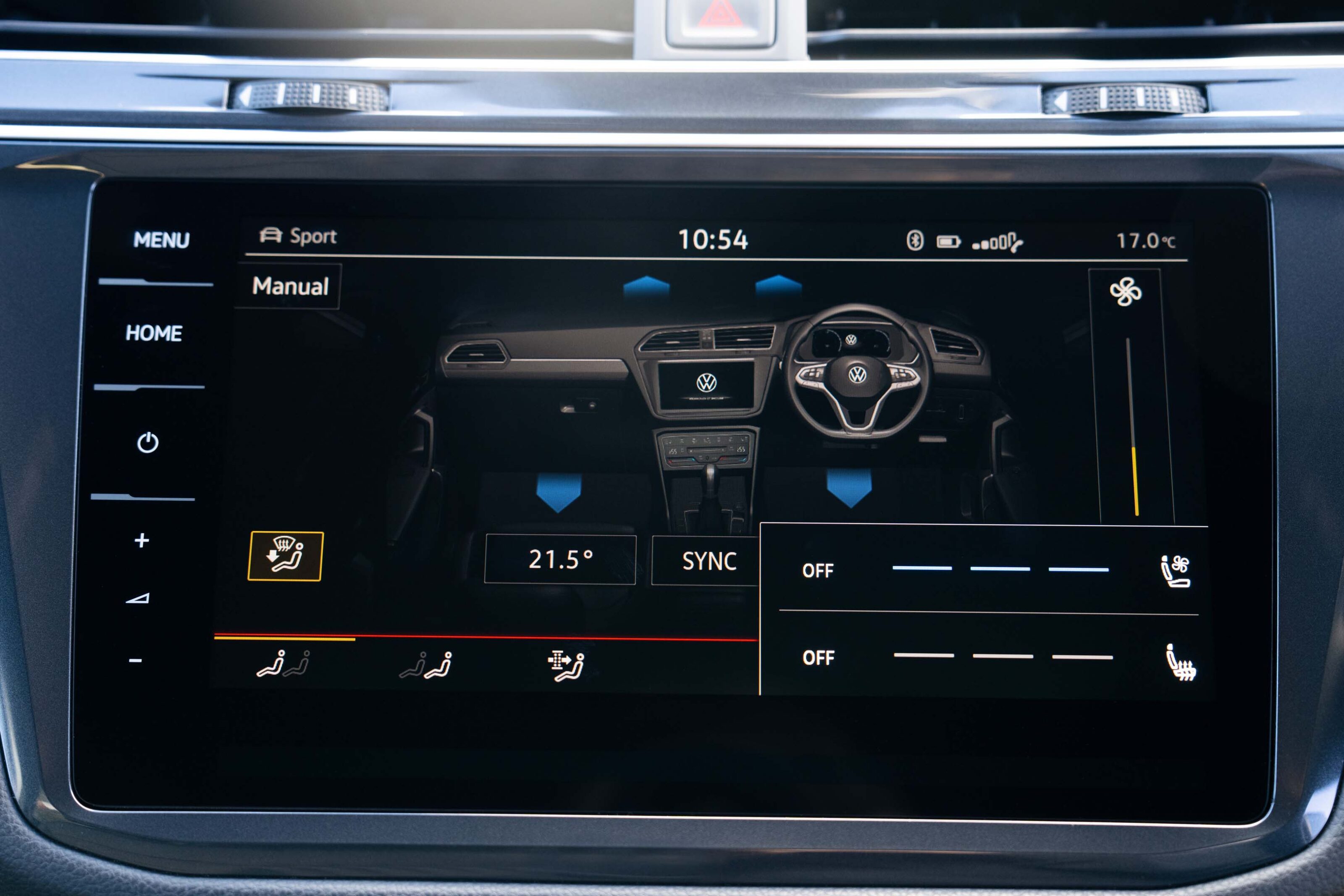
So ask the hard questions of your dealers and keep an eye out for when RCTA and side assist make their welcome return, hopefully early in 2023.
I bang on about RCTA being a must-have because it avoids silly little crashes in car parks and wherever else but also adds another layer of protection if the kids have gone rogue.
Metallic paint is $900 for all but two of the colours. White is free, King’s Red is $1100.
You can add the Luxury Package for a healthy $5500 which adds leather upholstery, powered driver’s seat adjustment, heated and ventilated front seats and a massive panoramic sunroof.
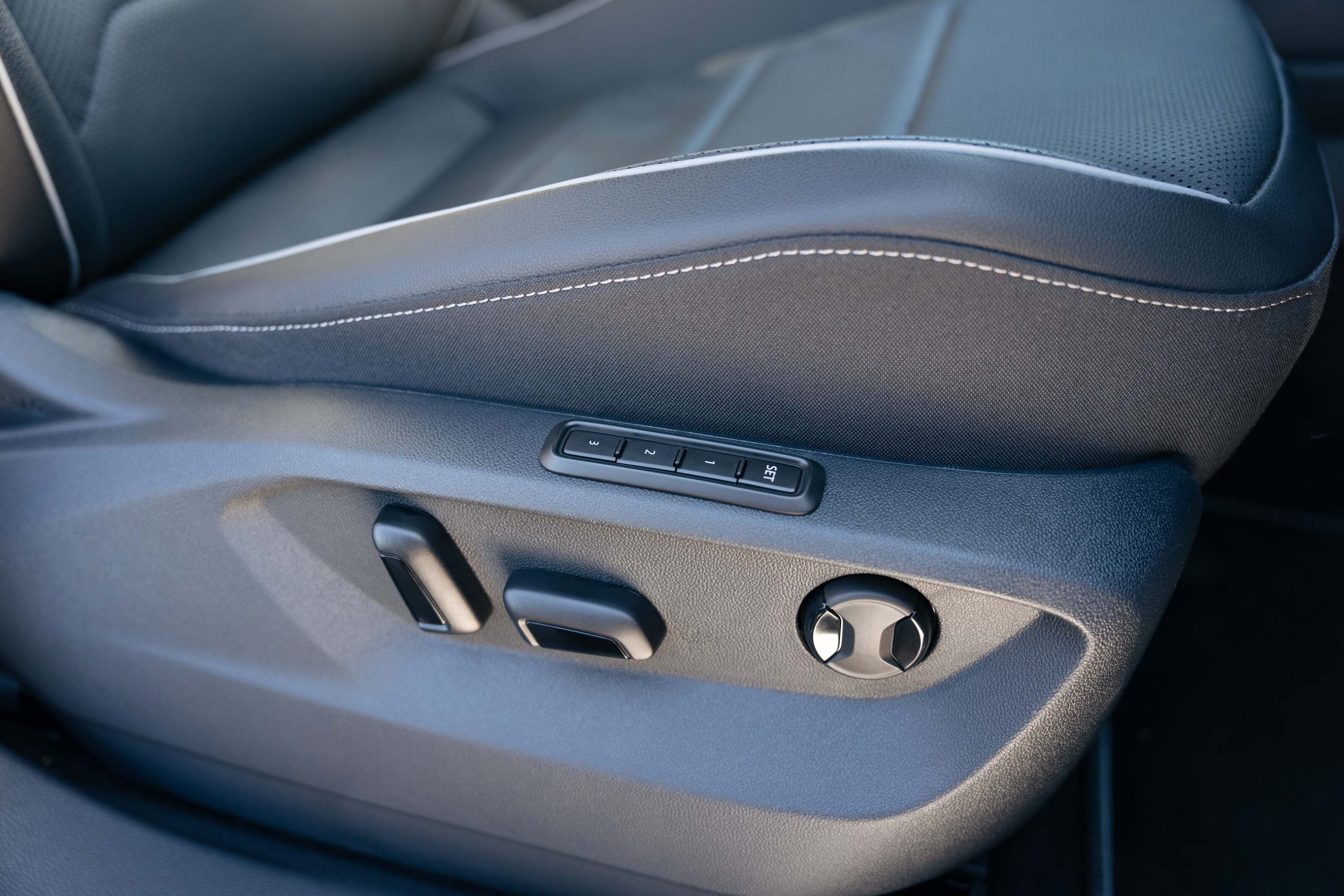
Stepping up to the mid-spec Elegance is actually more of a jump, with the 162 TSI petrol starting at $56,990 and the 147 TDI diesel at $61,190 (both before on-road costs). One of those startling stats? The 162 TSI is by far the most popular driveline in the Tiguan ranges and VW Australia is struggling to get hold of enough of them to satisfy demand, so much so that there’s a whole new addition to the range that I’ll cover in a minute.
The Elegance swaps the 18s for 19-inch alloys, ventilated front seats are standard, heating is added to the front seats and outboard middle row seats, adaptive damping comes on board, as do Matrix LED headlights, the 9.2-inch touchscreen, tinted rear windows, interior ambient lighting and some chrome on the exterior.
In addition to the paint options, you can get the Sound and Vision Package for $2600, which throws in a head-up display, around-view cameras and a thumping great Harman Kardon sound system. A panoramic sunroof is $2100. The torch fitted in the boot? That’s a freebie.

The R-Line is now its own model after the huge success of R-Line packages applied to the Elegance trim level in both standard and Allspace Tiguans. The two R-Lines have the 162 TSI and 147 TDI engines for $58,490 and $61,690 respectively. Before on-road costs.
Comprising a mixture of mechanical and cosmetic upgrades, the R-Line comes with 20-inch alloys, progressive steering rack, premium LED taillights (animations, mostly), R-Line leather trim, R-Line steering wheel with haptic feedback, black headliner, stainless steel pedals and an R-Line body kit.
Paint is the same as the Life and Elegance except you can’t get King’s Red.

So keen was VW to get customers into popular 162 TSIs and so few are the available Elegance and R-Lines that VW has invented the $51,990 (before on-road costs) Adventure. It’s a toughie, with bash plates, cladding and 17-inch wheels for the legal fitment of snow chains (which you can choose to take for free from a range of accessory packs) and is based on the Proline Tiguan the cops use.
A further surprise is that it’s a five-seater, leaving a massive boot for, I guess, the snow chains as well as all your gear.
That car will arrive later in the year and I’d be lying if I didn’t find it ridiculously intriguing.
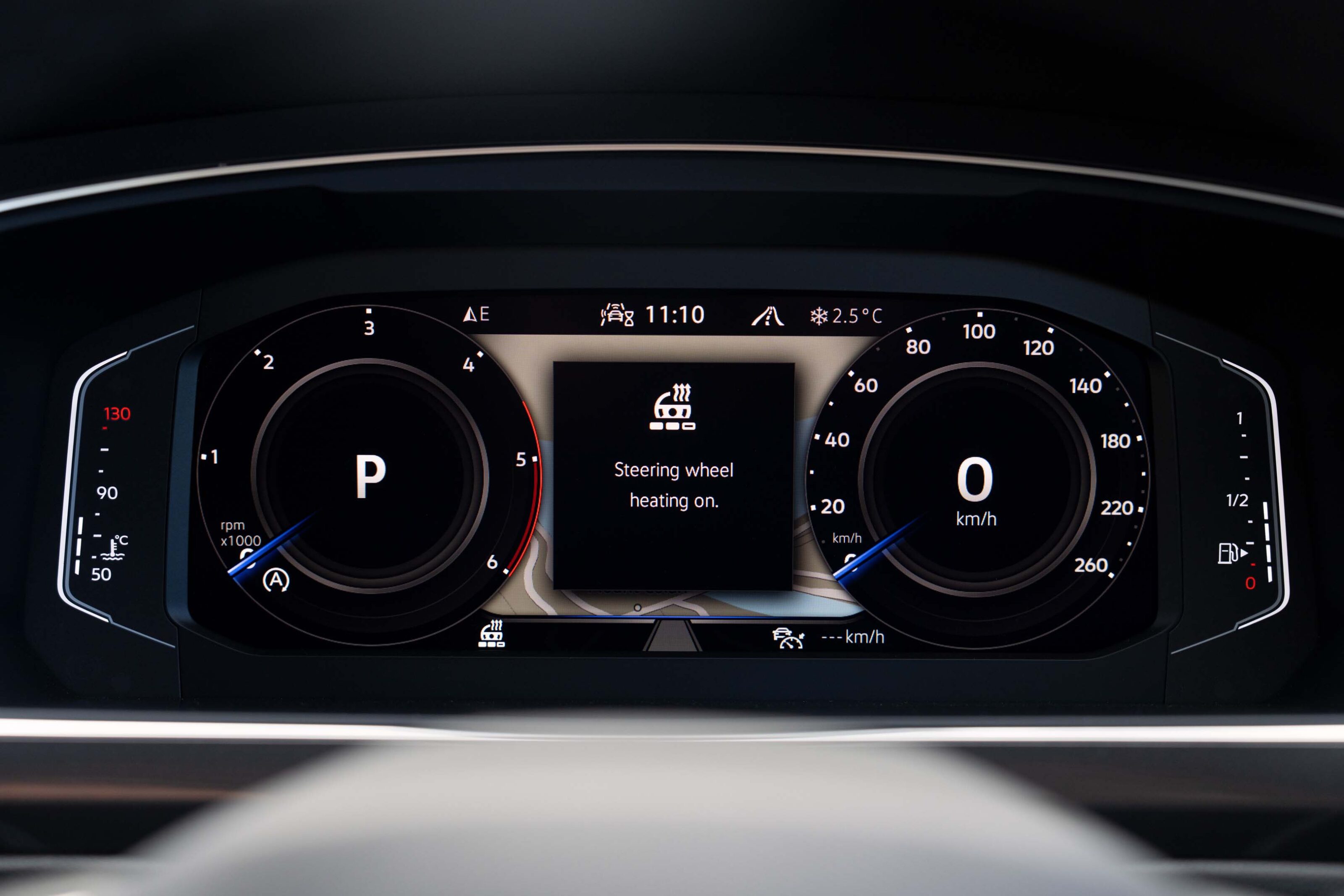
Comfort and space
Compared to the standard wheelbase Tiguan, the Allspace measures 22cm longer at 4734mm and rides on a wheelbase of 2791m. That’s quite a bit smaller than Mazda’s compact version of a seven-seater, the CX-8, which comes in at 4901mm with a wheelbase of 2930mm.
Half of the extra body length is a 10.6cm longer rear overhang to make space. Some of that space is eaten up by two foldable jump seats. With all three rows in use, you have 230 litres of cargo space, which is about the same as a small hatchback that isn’t a VW Polo (its boot is huge).
Fold the back row down and you get 700 litres, an 85-litre improvement over the shorter car and that advantage extends to 110 more litres with both rows down at 1775 litres, even though there’s a torch eating up valuable space (not really, but I love the torch).
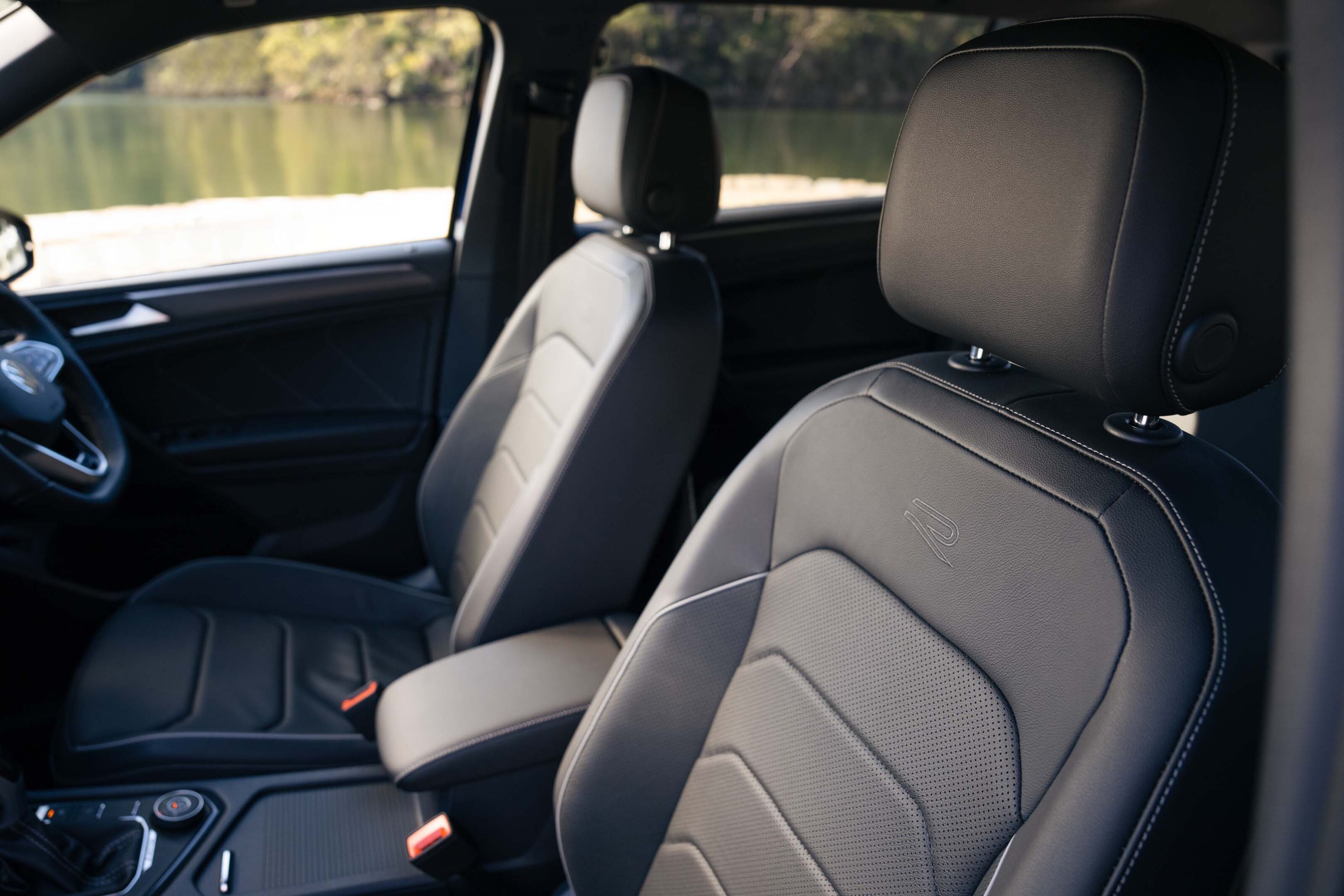
The third row is definitely an occasional use proposition in much the same way as a Mitsubishi Outlander. It’s very tight but the Tiguan does at least have a slideable middle row (60:40 split in the slide, 40:20:40 folding) to liberate some space. As you’ll see in my video review, it’s for patient, short people for short trips.
Despite what internet people say in the comments, the middle row is very comfortable. You have plenty of head and leg room and supportive outboard seats but a less than comfortable middle seat owing to a fairly high transmission tunnel.
Again, someone short and patient could occupy that seat, but not for too long The centre armrest has two cup holders, the rear of the centre console has 12-volt and USB-C power outlets, controls for the third climate zone and the attendant rear air vents.
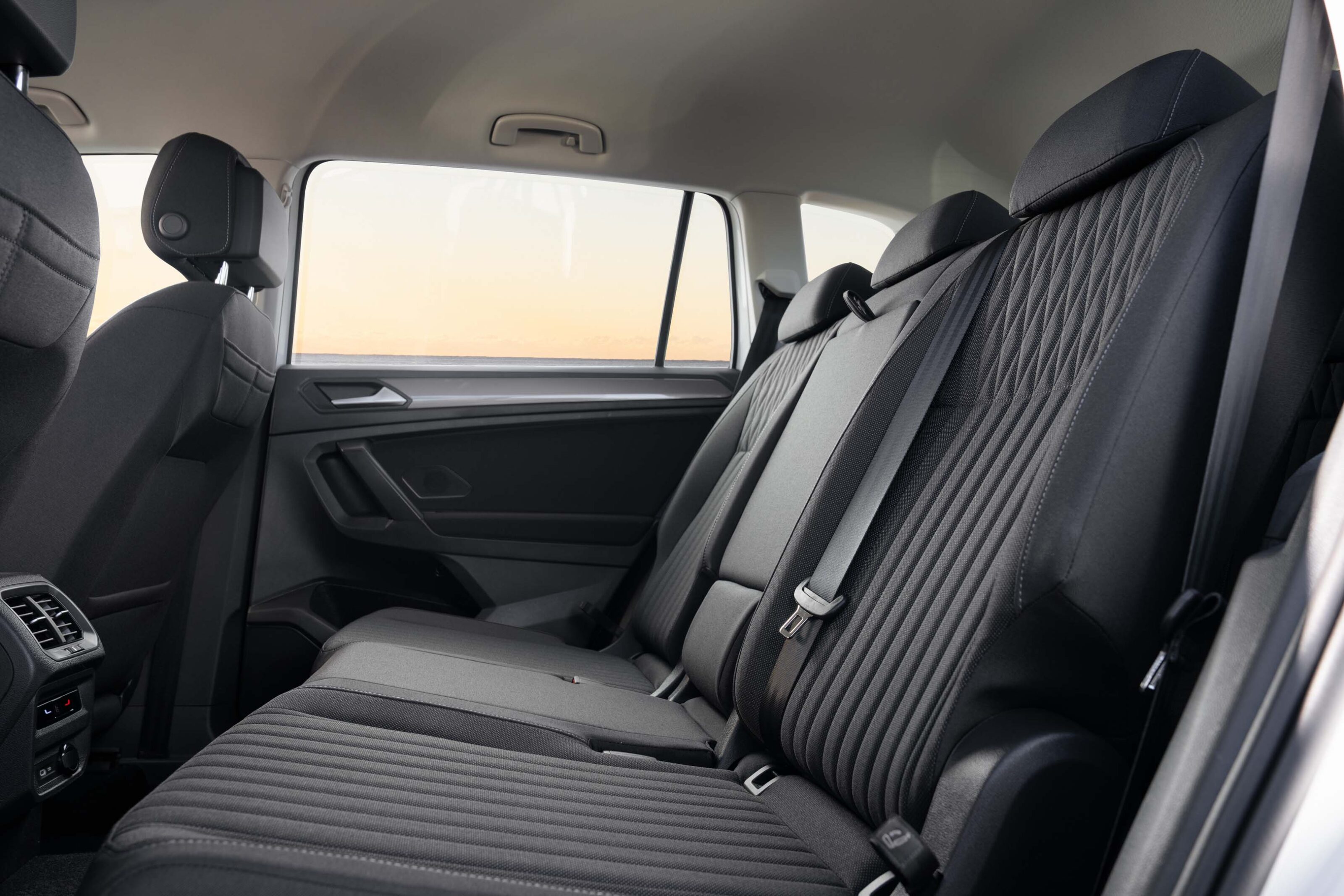
There are also two hefty door bins suitable for my famously large water bottles and they’re lined with carpet to reduce noise.
Front seat passengers are well looked after with comfortable seats in all grades, the higher grades naturally more comfortable and with leather. Two more cup holders are located in the centre console along with two USB-C ports in with the wireless charger and again, two huge bottle holders in the door bins.
It’s a great interior, with the digital screens and a restrained, angular techno vibe plus splashes of cool materials to lighten things up. The cloth will be quite hardy, too, if you’re one of the few folks who go for the Life.
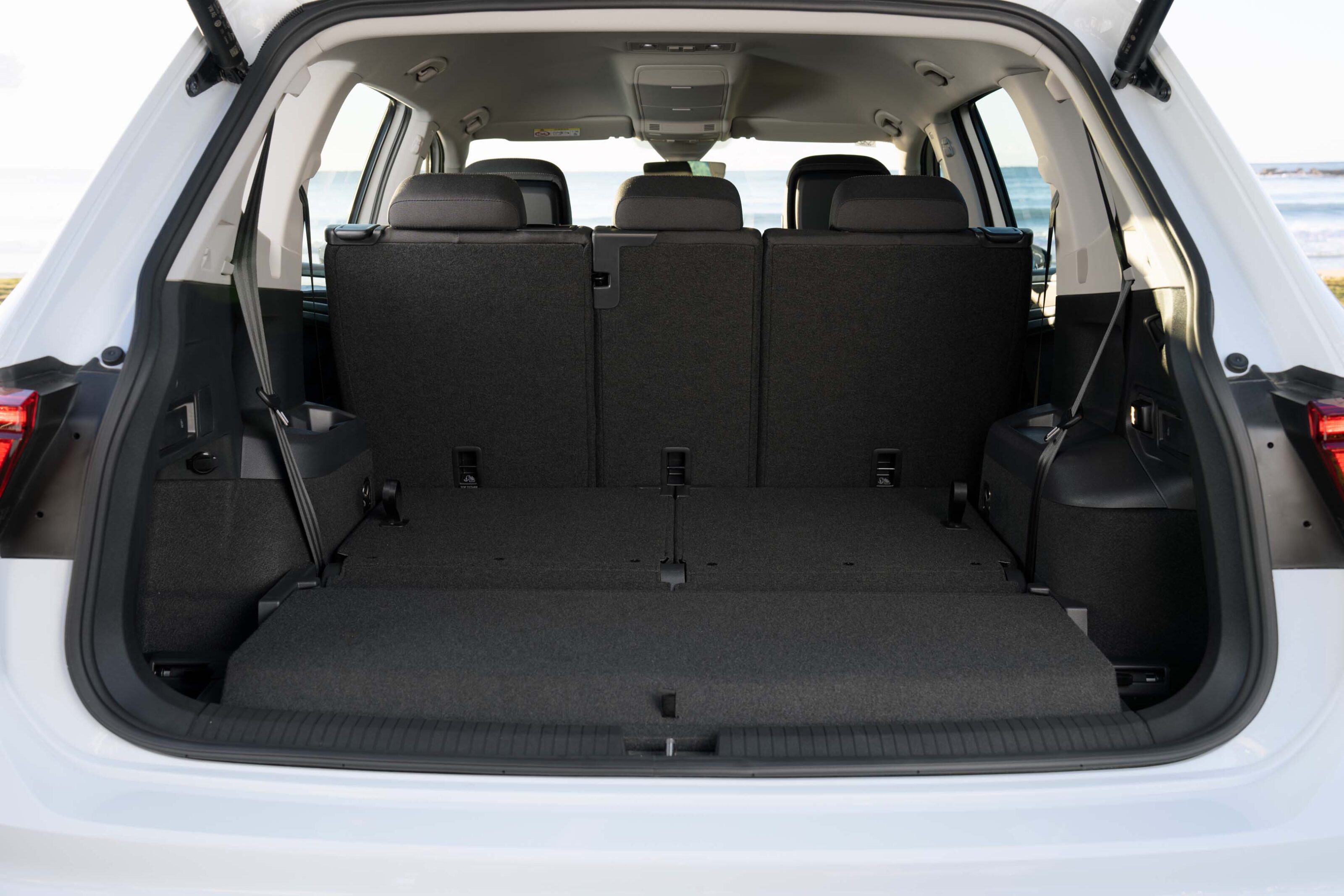
On the road
Let’s get through this list of drivelines first. The Life 110TS is the sole 1.4-litre turbo four-cylinder, with 110kW and 250Nm with only front wheels driven by the only six-speed dual-clutch transmission in the range.
It’s still reasonably swift, logging the 0-100km/h sprint in under ten seconds, which is pretty good going for a seven-seat SUV, but of course that’s going to suffer with a full load, more than any of the rest of the range. At 7.7L/100km it’s the thriftiest, beating the diesel 147 TDI by a hair.
The Life 132 TSI, gets another gear, two more driven wheels and a healthier 132kW and 320Nm from its version of the 2.0-litre four-cylinder petrol. The extra power and traction knock 1.3 seconds off the claimed 0-100 time of the 110 TSI to clock in at 8.2 seconds. The penalty at the pump is 1.2L/100km, taking you to 8.9L/100km.
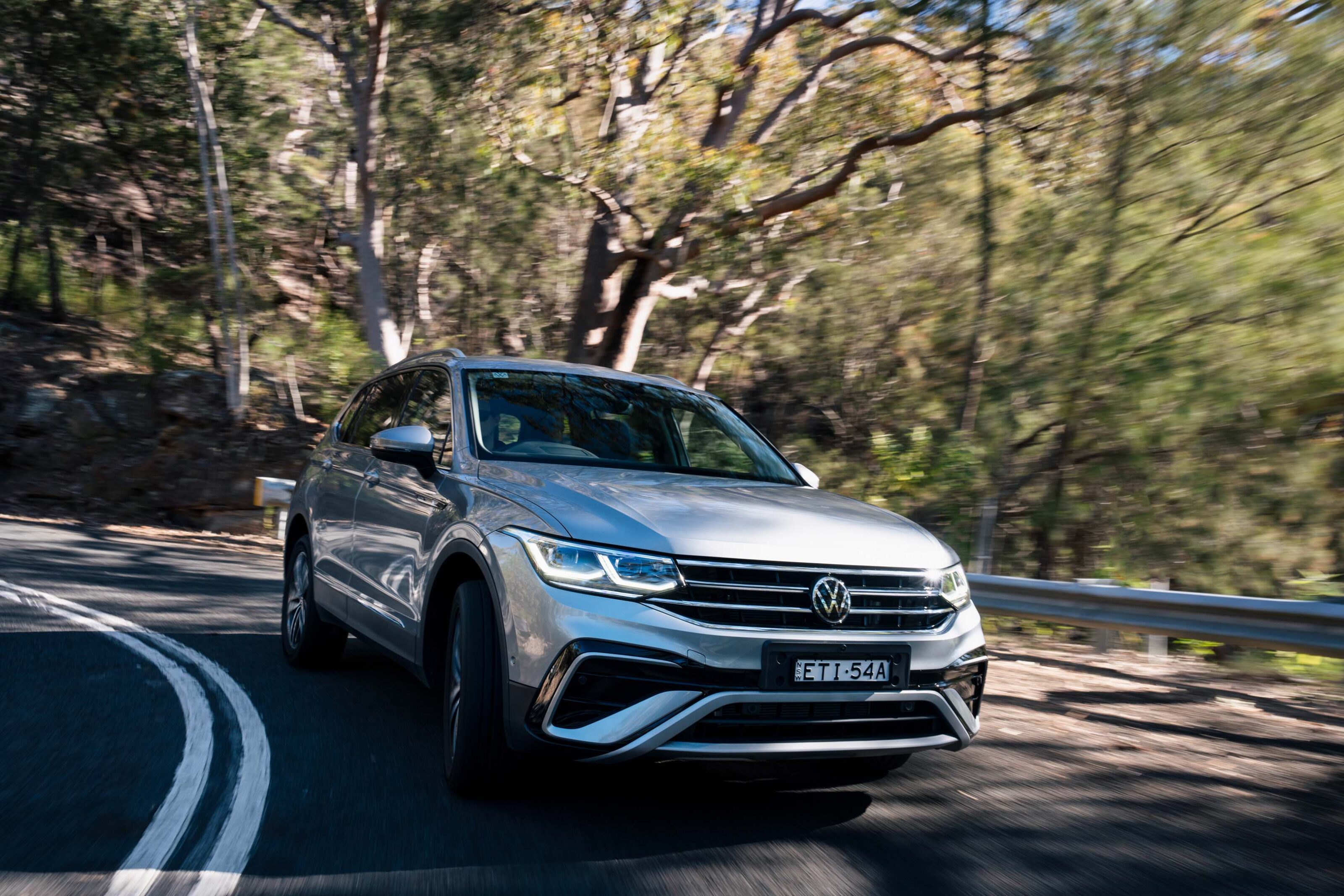
With the jump to the 162 TSI version of the engine in the Elegance and R-Line, you get 162kW and 350Nm of torque for another 1.4 seconds’ cut, completing the sprint to 100km/h in 6.8 seconds, which is getting into hot hatch territory. Interestingly, fuel economy is slightly better than the 132, coming in at 8.6L/100km, which is probably down to the 162 engine having regenerative braking.
All the petrols require minimum 95 RON fuel. VW did point out that its rivals use more petrol, partly because they’re counting the petrol V6s of the Santa Fe and Sorento that are famously thirsty both on paper and in the real world.
Finally, there’s the 147kW/400Nm turbo-diesel, again using the same all-wheel-drive, seven-speed set-up. While it’ll run to 100km/h in 7.8 seconds – still handy – it’s said to use just 6.2L/100km if you’re not always doing that. As you might imagine, fewer and fewer folks are choosing the diesel as the 162 TSI is the most popular driveline in the range.

On the day, I got through the 110 TSI Life, 147 TDI in Elegance form and the 162 TSI R-Line, with the 132 not available for the day, partly because hardly anyone buys it, partly because there’s only so much time in a day.
Rather pleasingly, I was quite taken with the cheapest Allspace, the 110 TSI. It’s usefully punchy even with such a big car being dragged along by a 1.4-litre engine. There was even enough power and torque for the odd tyre chirp off the lights in traffic but not so much the wheel writhed in my hand. Rolling on 18s and high-ish profile 235/55 tyres, the ride was comfortable and the steering didn’t seem to suffer for it.
I also quite liked the cloth trim and the simplicity of the interior. For the money, it’s competitively equipped although that falters a little when the chip shortage-enforced de-speccing happens after the initial allocation is exhausted.

Even so, it’s very nice to drive and obviously has all that’s good about the Allspace, with tons of boot space, a good safety package and a comfortable drive in town or on the open road.
Next up was the 147 TDI Elegance. The noisiest of the engines, it’s still pretty quiet. The 400Nm punch of the oil-burner was immediately apparent and it’s actually a fairly serene car when all is said and done. The larger 19-inch wheels don’t destroy the ride and tyre noise is commendably low if not entirely absent.
One of the reasons the ride survives is the addition of adaptive damping, which is ever-so-plush in its Comfort setting and not too harsh in the sportier selection.
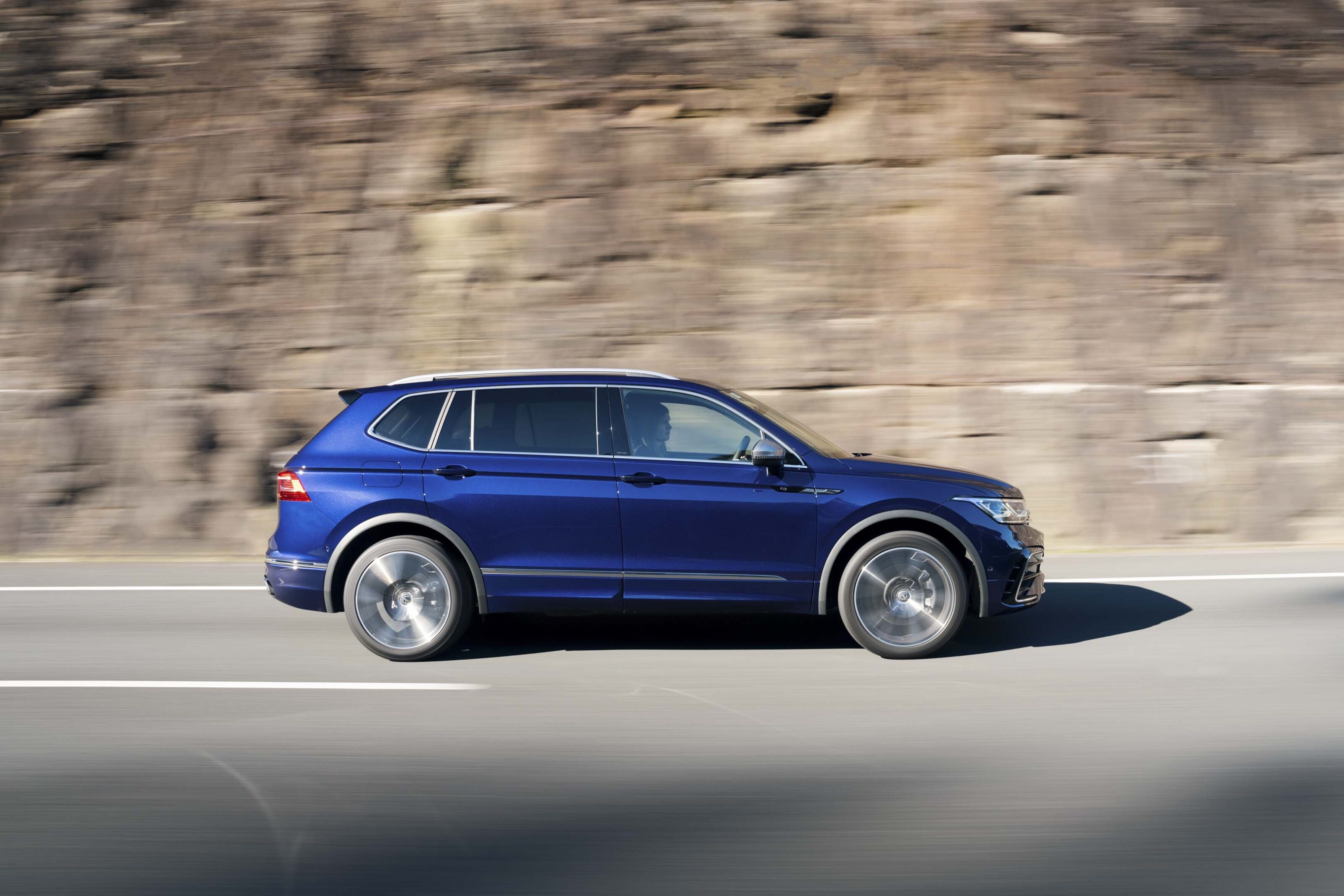
Not that many people choose the 147 these days, but if you’re considering it, it tows no more than the 162 TSI at 2500kg braked, though it’s most likely that the extra 50Nm will mean dragging your trailer or boat will be slightly more straightforward and fuel economy won’t suffer as much.
But really, that’s about it apart from the theoretical longer range from its 60 litres of diesel running to nearly 1000km on the combined cycle. I say theoretical because I’m basing it on the ADR fuel figure, so your mileage will, as they say, vary.
Final car for the day – and the one I drove home – was the 162 TSI R-Line. Riding on bigger-again wheels, you will notice the difference between this and the Elegance.
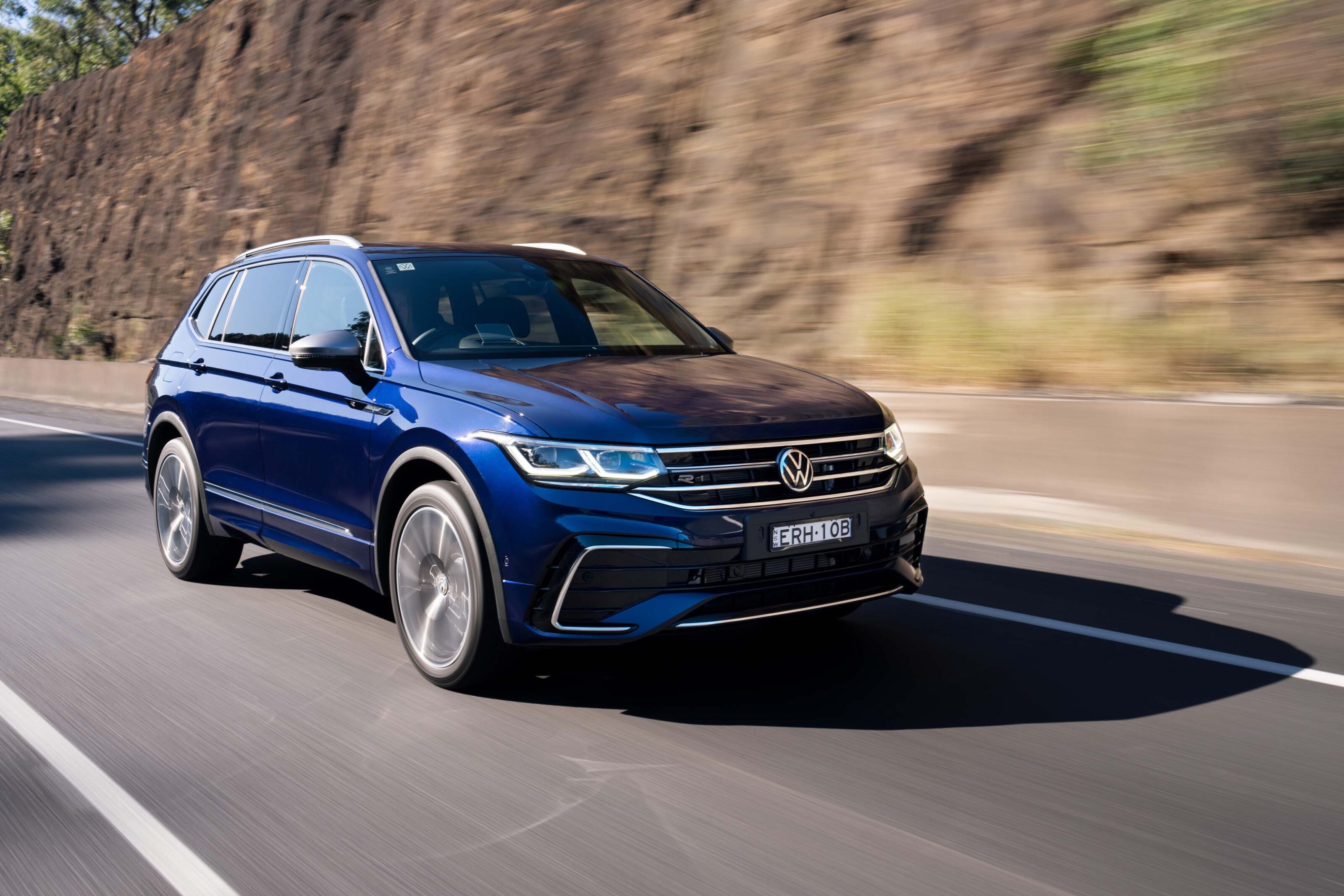
The adaptive damping still manages things well, but there’s a harder edge to the ride, as I discovered on the short-wheelbase version in January.
It’s obvious why people like it; it’s tremendous fun to drive for a big car and whips along with only light provocation. The steering is mostly pretty good – I’m not a fan of progressive steering racks for entirely personal and irrational reasons – so I was pleasantly surprised.
The 162 is probably nearly as relaxed when you’re just pootling as the diesel, too, with similar in-gear performance and quicker acceleration off the line, which I found helpful in the cut and thrust.
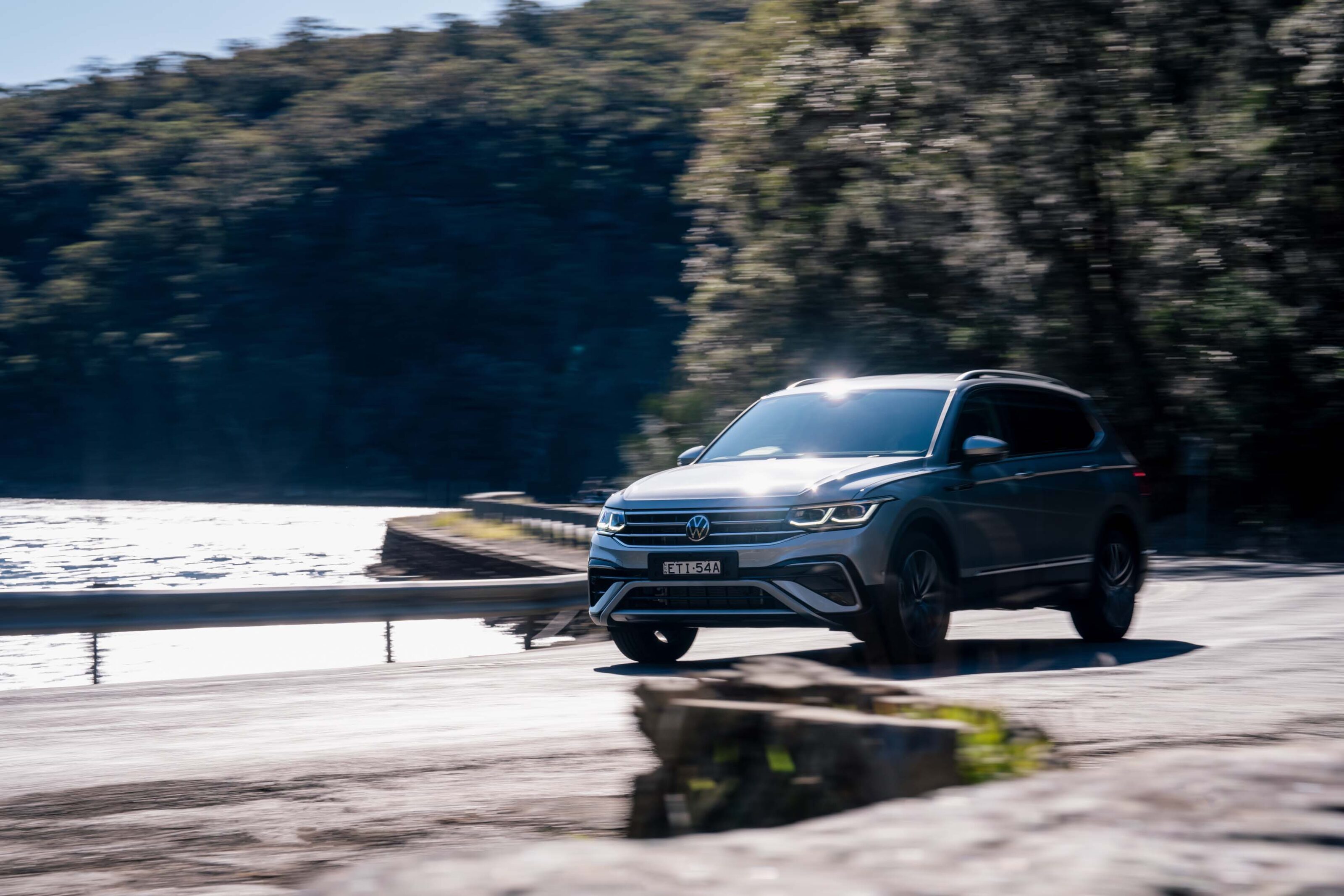
Ownership
Volkswagen offers a five-year, unlimited-kilometre warranty which is on the pace, beaten only by Kia and Mitsubishi.
Your dealer will offer you the opportunity to pay for your servicing up front with three- or five-year service plans. The 110 TSI’s three-year plan is $1400 while five years is $2600.
The rest of the range costs $1650 for three years and $2950 for five. Depending on the grade and chosen plan, you’ll save somewhere between ten and 25 per cent over pay-as-you-go. You’ll need to return to the dealer every 12 months or 15,000km.
This pricing isn’t especially cheap and significantly more expensive than the CX-8 and, for the first five years at least, quite a bit more expensive than the Outlander. The larger competitors like Santa Fe and Sorento cost roughly the same over the same period for the diesels, around $600 more than the petrol V6s.

VERDICT
The Tiguan Allspace update hasn’t really changed what was good about the car from the get-go – it fits a lot of interior space into a modest, city-friendly(ish) footprint.
Even though bits and pieces are coming and going for the Tiguan Allspace like a teenager with a freshly-minted licence and a father with no moral high ground to restrain him (I don’t know why I’m using this analogy!), the 2022 update to the specifications is useful. And the Tiguan is generally far better equipped than when the second-generation version of the SUV launched in 2016.
The Tiguan and Allspace are ageing well and the latter remains at the top of its game, even if it’s less a seven-seater and more 5+2 with a huge boot packed into an attractive body shell.
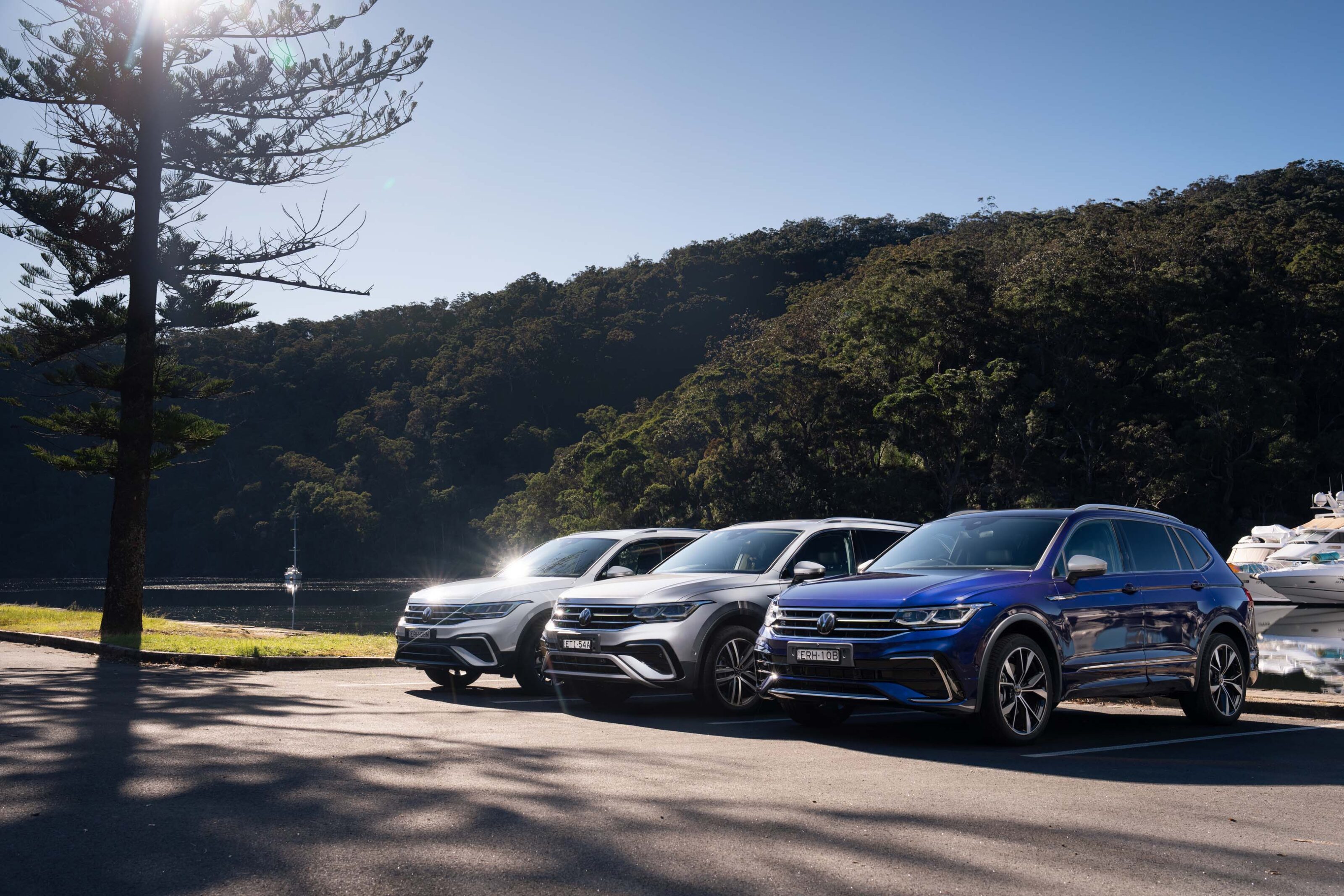
The 110 TSI is surprisingly good, the diesel an excellent (if niche) option, the 162 TSI machines are swift and it’s very easy to see why they’re in such demand.
Until the Adventure arrives, it’s a fairly safe bet to say the Elegance 162 TSI is the pick of the range despite the price pushing over the sixty grand mark to get it on the road.
2022 Volkswagen Tiguan Allspace specifications
Score breakdown
Things we like
- Great chassis
- Strong engines
- Well-equipped
Not so much
- Changeable 2022 spec inclusions
- Flaky CarPlay integration
- Hefty price increases
We recommend
-
 News
News2022 VW Tiguan Allspace Australian pricing and features: Adventure Edition arrives
The biggest Tiguan now has a five-seater option, giving more boot space than ever before
-
 Reviews
Reviews2022 Volkswagen Tiguan Life 132TSI review
A facelift keeps Wolfsburg’s mid-size SUV up to date, and a premium pick in the segment
-
 News
NewsNew car calendar 2026: All the new cars coming to Australia next year
Here’s the WhichCar by Wheels guide to all the new cars that will launch in Australia in 2026. Check back in regularly for updates...


